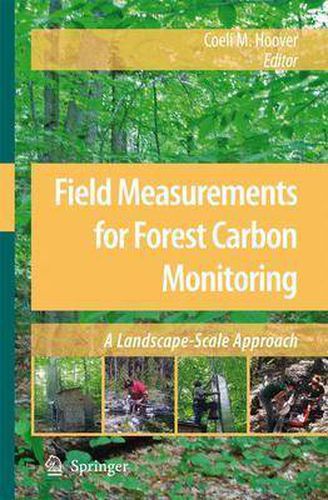Readings Newsletter
Become a Readings Member to make your shopping experience even easier.
Sign in or sign up for free!
You’re not far away from qualifying for FREE standard shipping within Australia
You’ve qualified for FREE standard shipping within Australia
The cart is loading…






This title is printed to order. This book may have been self-published. If so, we cannot guarantee the quality of the content. In the main most books will have gone through the editing process however some may not. We therefore suggest that you be aware of this before ordering this book. If in doubt check either the author or publisher’s details as we are unable to accept any returns unless they are faulty. Please contact us if you have any questions.
In the summer of 2003, a workshop was held in Portsmouth, NH, to discuss land measurement techniques for the North American Carbon Program. Over 40 sci- tists representing government agencies, academia and nonprofit research organi- tions located in Canada, the US and Mexico participated. During the course of the workshop a number of topics were discussed, with an emphasis on the following: * The need for an intermediate tier of carbon measurements. This level of study would be more extensive than state-level inventories of the US Forest Service Forest Inventory and Analysis Program, but less detailed than intensive ecos- tem studies sites such as those in Long Term Ecological Research network. This tier would ideally provide a basis to link and scale remote sensing measurements and inventory data, and supply data required to parameterize existing models (see Wofsy and Harriss 2002, Denning et al. 2005). * The design criteria that such a network of sites should meet. The network and s- pling design should be standardized, but flexible enough to be applied across North America. The design also needs to be efficient enough to be implemented without the need for large field crews, yet robust enough to provide useful information. Finally, the spatial scale must permit easy linkage to remotely sensed data. * The key variables that should be measured at each site, and the frequency of measurement.
$9.00 standard shipping within Australia
FREE standard shipping within Australia for orders over $100.00
Express & International shipping calculated at checkout
This title is printed to order. This book may have been self-published. If so, we cannot guarantee the quality of the content. In the main most books will have gone through the editing process however some may not. We therefore suggest that you be aware of this before ordering this book. If in doubt check either the author or publisher’s details as we are unable to accept any returns unless they are faulty. Please contact us if you have any questions.
In the summer of 2003, a workshop was held in Portsmouth, NH, to discuss land measurement techniques for the North American Carbon Program. Over 40 sci- tists representing government agencies, academia and nonprofit research organi- tions located in Canada, the US and Mexico participated. During the course of the workshop a number of topics were discussed, with an emphasis on the following: * The need for an intermediate tier of carbon measurements. This level of study would be more extensive than state-level inventories of the US Forest Service Forest Inventory and Analysis Program, but less detailed than intensive ecos- tem studies sites such as those in Long Term Ecological Research network. This tier would ideally provide a basis to link and scale remote sensing measurements and inventory data, and supply data required to parameterize existing models (see Wofsy and Harriss 2002, Denning et al. 2005). * The design criteria that such a network of sites should meet. The network and s- pling design should be standardized, but flexible enough to be applied across North America. The design also needs to be efficient enough to be implemented without the need for large field crews, yet robust enough to provide useful information. Finally, the spatial scale must permit easy linkage to remotely sensed data. * The key variables that should be measured at each site, and the frequency of measurement.